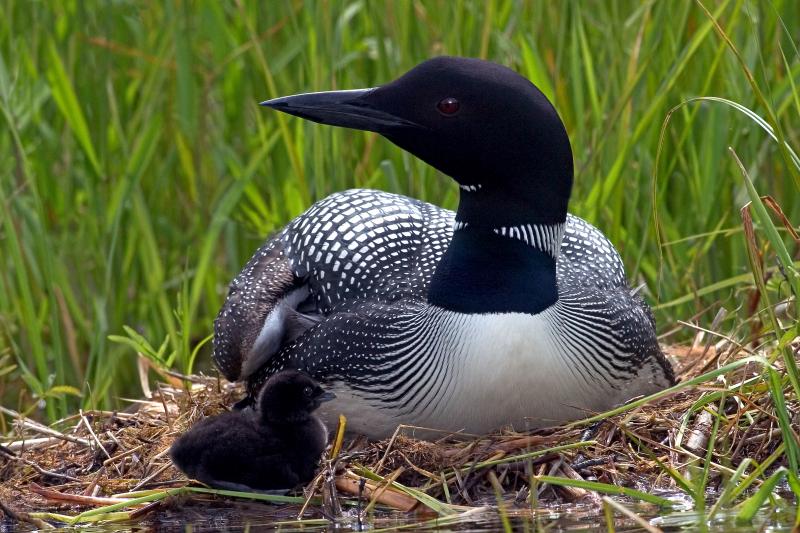AUGUSTA — The Maine Department of Inland Fisheries and Wildlife is partnering on a national restoration effort for the common loon designed to strengthen and restore loon populations within their existing and former range in New England.
"Maine is home to 75 percent of the territorial pairs of loons in New England and New York, making Maine the stronghold for the northeast loon breeding population," said Danielle D'Auria, wildlife biologist with MDIFW, in a press release Tuesday. "We are pleased to play a role in the restoration of this species to its historic range in Massachusetts."
IFW and Maine Audubon are assisting Biodiversity Research Institute on this program called "Restore the Call," which will relocate older loon chicks (more than 6 weeks old) from areas with dense loon populations in Maine and New York to a release lake in southeastern Massachusetts.
The program is designed to boost the population and number of breeding pairs in Massachusetts. Adult loons are slow to colonize new areas, as they generally stay within 2.5 miles of the previous year's breeding territory and loon chicks usually return to lakes within 7-8 miles of the lake where they were raised. Chicks translocated to southeastern Massachusetts will likely return to that region to breed as adults in four to six years, the age at that loons start to claim territories.
In Massachusetts, there are only 45 breeding pairs in the state. The majority of loon pairs that have recolonized Massachusetts are on or near the Quabbin and Wachusetts Resevoir, and few loons have dispersed and formed breeding pairs outside of this region.
"Restore the Call aims to help expedite expansion of the loon population into this formerly occupied area of the state," said Andrew Vitz with Massachusetts Division of Fisheries and Wildlife. "Without these efforts, establishing nesting loons in southeastern Massachusetts would likely take decades if it happens at all."
| Things You Can Do to Be Loon-Friendly
• Obey no-wake law within 200 feet of shore |
Last year, seven loon chicks were successfully translocated from New York's Adirondack population to Massachusetts. This summer, New York and Maine hope to contribute a combined 10 chicks to this project.
"No more than 10 chicks would be moved from Maine, which constitutes a small proportion of the total offspring from this healthy population," said D'Auria in the release. "This contribution will not significantly impact the overall viability of Maine's loons."
Additionally, chicks will only be translocated from highly productive lakes with a history of successful reproduction.
Once transported to Massachusetts, chicks will be kept in aquatic enclosures on the rearing lake to ensure their safety as they continue to grow and mature. These enclosures allow biologists and wildlife veterinarians to easily monitor their feeding and behavior without being seen by the loons (due to blinds and visual barriers). After several weeks, the chicks will be recaptured and physically examined before being released onto the lake. From that point, the chicks are then visually monitored until they fledge (fly off the lake). The rearing lake and lakes in the region will be monitored for years to come in hopes of detecting the return of these individuals.
Related link:
• Learn about loons with Maine Audubon's Sue Gallo at Camp Bishopswood July 12



























